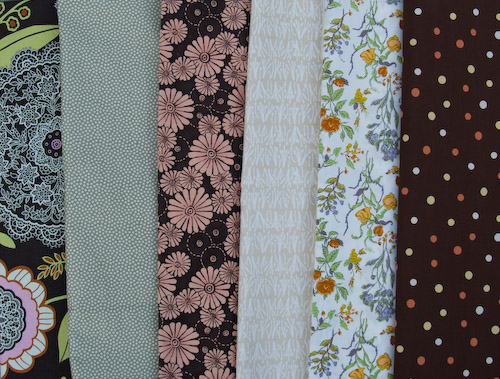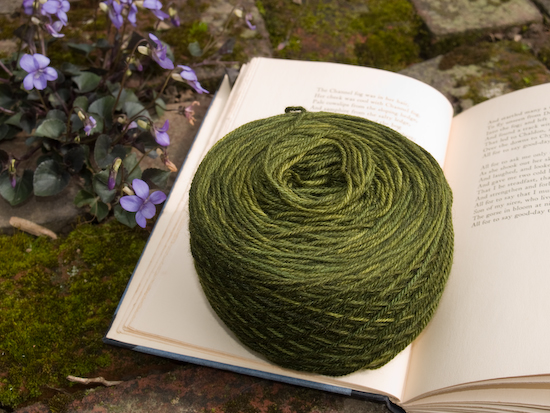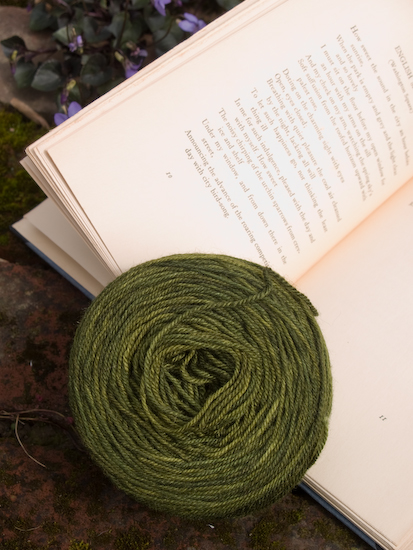As soon as I picked up Bend-the-Rules Sewing, I knew I’d have to make the Lap Quilt right away. I had totally forgotten that I’d admired Daphne’s use of this pattern for her scrumptious little nephews. In case I’m not actually the last crafty sort on the planet to take a gander at this splendid little book, I’ll point you to some more beautiful versions others have sewn. I love this one, this Gee’s Bend-inflected version, and this one, which uses the same Amy Butler fabric I have left over from last summer’s skirt — leftovers I’d already decided to build my own quilt around. And most inspirational of all? These fantastic sheets by Moonstitches.
Happily, my burning desire to start sewing again coincided with Bolt’s semi-annual sale. I rooted through discounted fabric like a pig after truffles and came up with this:

I love bending the rules in my knitting, so I’m thoroughly content to follow Amy Karol off the beaten path in sewing, too. I already love her for eschewing fusible interfacing in favor of good old cotton flannel (some of which I also bought so I can sew a charming handbag or a bib on a whim this summer). But I can’t start on my quilt just yet: my sewing table is occupied by my cute little Vogue dress! I did the top this weekend, and thus far I’m very satisfied with my work. We’ll see if I still feel that way once I tackle the invisible zipper and find out whether the thing will fit. I’ve already discovered that a yard of ribbon for the tie at the top is not enough; I love the ribbon I have, though, so I’ll be working on a creative solution to dodge the need for extra length to tie a bow.
***
During the writing of this post I had a phone call from my mother to tell me that my grandmother has passed away. It’s not a sad passing. The word “pass” comes from Latin pace, “peace,” and that’s no euphemism in this case. [oops! This is me reading my dictionary wrong. The OED was trying to tell me that “pass” comes from an Old French word derived from Latin passus, which means ‘pace’ – not that passus itself derived from Latin pace. Now we all know. Thanks for the catch, Mom.] Ruth Phillips Foote lived ninety-seven wonderful years, and she died with the same quiet grace and perfect manners that marked her every action and set the behavioral benchmarks for all her grandchildren and great-grandchildren. She was perfectly organized, she bought our Christmas presents in September and mailed them in November, she wrote stylish and heartfelt notes of gratitude for gifts or simple communications of love and pride at her family’s accomplishments. She was always dressed fit for high tea, she used her silver service daily, and she spoke so beautifully that her laudatory pronunciation of words like “newspaper” were instilled in me as a tot. (Now that I think about it, this last was especially remarkable: she was born and raised on Long Island.) But despite her high polish, she was warm and squeezable and ready to laugh. She adored her family and her many, many friends, and when she outlived them all, she just made kept making new ones. And she did the New York Times crossword every day of the week, including Sundays, and could beat anyone at Scrabble as recently as last year.
We knew she was coming to the end of her time with us. My brother got to make a final visit last week, and my aunt and uncle who live on the east coast have been making regular trips to see her. We knew she wouldn’t make it to his wedding in May, and she didn’t really get to know his fiancée, who is more like her in generosity and boundless affection and social grace than any of us. She treasured every chance of seeing her family all together and would have loved to be there. But it was time for her to go. In a lovely coincidence, one of her nieces stopped in for a last goodbye this afternoon. Having been a nurse, she could read the signs that Gram didn’t have much time. My grandmother wasn’t responsive, but when her niece held her hand and told her it was okay for her to leave and that Taddie, her beloved husband, was waiting for her, she made a little sound at his name. Three hours later she was gone.
It felt frivolous to go on with a chatty post about my new fabric, knowing that my last living grandparent had left us. But Gram was a consummate sewer. At seventeen, she took in sewing to help support her family after her father died, but the necessity of the work didn’t spoil her pleasure in it. She made clothes for herself and for her children. She made my mother’s wedding dress. And she would have been pleased to see me pick up the hobby. I have her little maple sewing box, which still holds her sewing machine needles and cleaning tools and some shockingly dull scissors, well used over the years. I would have sent her a picture of me in my finished dress, and she would have framed it and put it on her bureau with all the other photographs of her dear family. She would have written me an elegant letter of praise in her expansive, decorative hand and reminded me of her opinion that even though my cousin Alison and I were her two summas, what I was really cut out for was modeling, dear. Gram didn’t believe in long goodbyes. She was always ready to look forward, even though her memory for the past was unparalleled. She had a beautiful sense of balance that way.
So that’ll be all for tonight. I’m off to have a little glass of scotch in memory of both my grandmothers.






